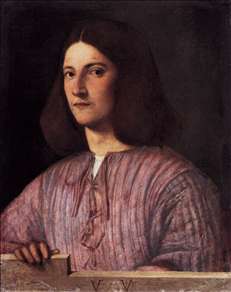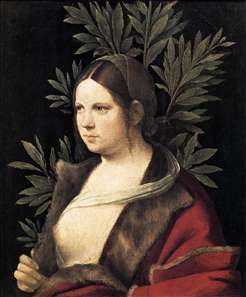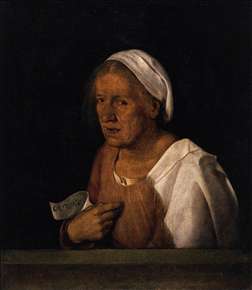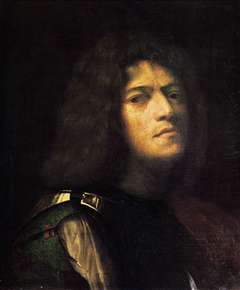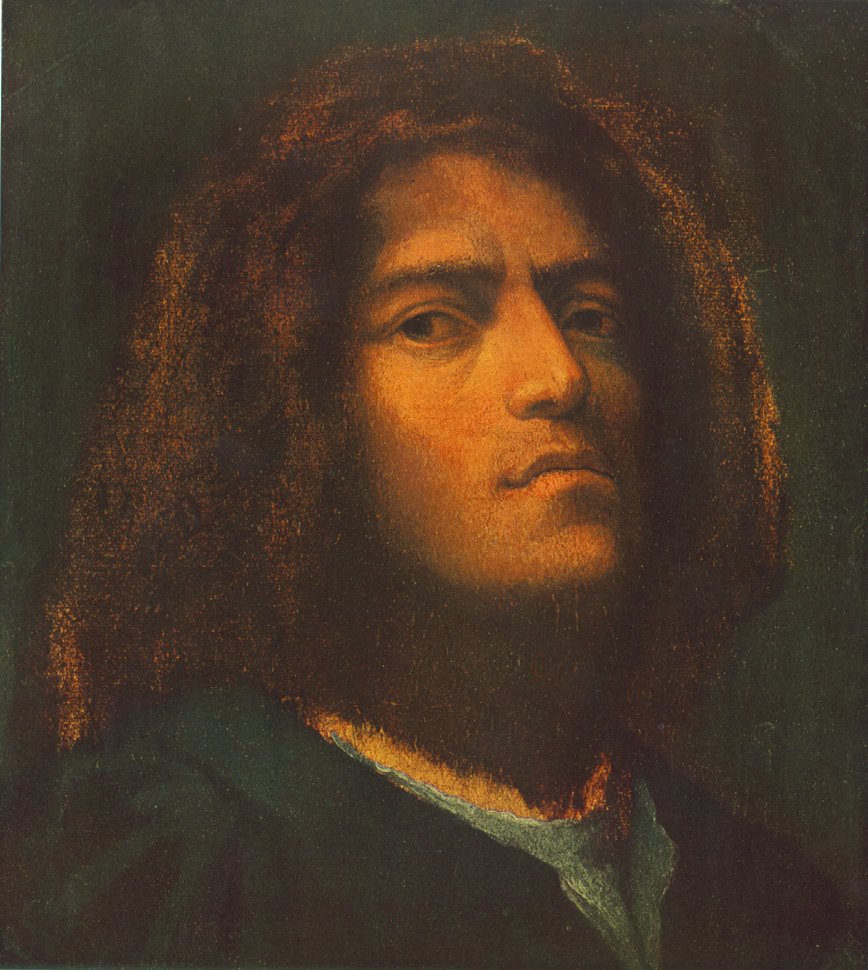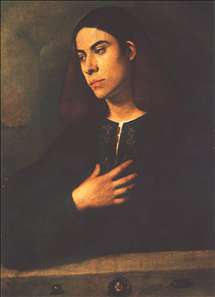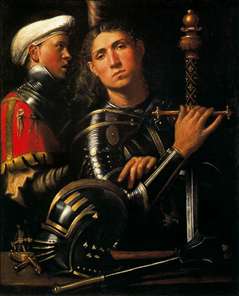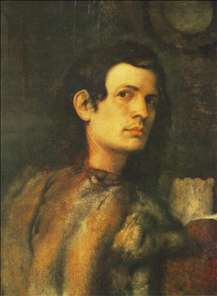Venetian painter (real name Giorgio Barbarelli or Giorgio da Castelfranco). Almost nothing is known of his life and only a handful of paintings can be confidently attributed to him, but he holds a momentous place in the history of art. He had achieved legendary status soon after his early death (probably from plague) and through succeeding centuries he has continued to excite the imagination in a way that few other painters can match. The extraordinary discrepancy between his enormous fame and the tiny scale of his oeuvre is explained by the fact that he initiated a new conception of painting. He was one of the earliest artists to specialize in cabinet pictures for private collectors rather than works for public or ecclesiastical patrons, and he was the first painter who subordinated subject-matter to the evocation of mood - it is clear that his contemporaries sometimes did not know what was represented in his pictures.
Vasari, who says that Giorgione earned his nickname - meaning Big George - because of his physical appearance and his moral and intellectual stature , ranked him alongside
Leonardo as one of the founders of modern painting.
Giorgione was born in Castelfranco, about 30 km. north-west of Venice, and according to Vasari he trained with Giovanni Bellini (although it has also been suggested that Carpaccio may have been his teacher). He had two important public commissions in Venice: in 1507-08 he worked on a canvas (now lost without trace) for the audience chamber of the Doges Palace; and in 1508 (assisted by
Titian) he painted frescoes on the exterior of the Fondaco dei Tedeschi (the German warehouse), now known only through engravings and ruinous fragments. Apart from this, the only contemporary documentation on any of his surviving paintings is an inscription on the back of a female portrait known as Laura (Kunsthistorisches Museum, Vienna), which says it was painted by Master Zorzi da Castelfranco in 1506; it also records that Giorgione was a colleague of Vincenzo
Catena, a partnership about which nothing else is known.
The main document for reconstructing Giorgione s oeuvre is the notebook of the Venetian collector and connoisseur Marcantonio Michiel, written between 1525 and 1543. Michiel, who is a scrupulous and reliable source, mentions a number of paintings by Giorgione, four or five of which can be plausibly identified with extant works: The Tempest (Accademia, Venice), The Three Philosophers (Kunsthistorisches Museum), Sleeping Venus (Gemldegalerie, Dresden), Boy with an Arrow (a copy?, Kunsthistorisches Museum), and (an oblique and less explicit reference than the others) Christ Carrying the Cross (S. Rocco, Venice). He says The Three Philosophers was finished by
Sebastiano del Piombo and the Sleeping Venus (the work that founded the tradition of the reclining female nude) was finished by
Titian. The problem of attribution was, then, complicated from the start by the fact that some of Giorgione s paintings were completed after his death by other hands, and confusion soon arose; in the first edition of his Lives (1550) Vasari attributed the S. Rocco painting to Giorgione, but in the second edition (1568) he gave it in one place to Giorgione and in another to Titian, even though many people believed it was by Giorgione . Distinguishing between the work of Giorgione and the young Titian continues to be one of the knottiest problems in connoisseurship, the celebrated Concert Champetre in the Louvre being the picture most hotly disputed between them.
Among the other paintings given to Giorgione are the Castelfranco Madonna, in the cathedral of his home town (first mentioned by Ridolfi in 1648 and accepted by almost all critics), and several male portraits, including a self-portrait in the Herzog-Anton-Ulrich Museum in Brunswick (perhaps a copy).
Giorgione is said to have been handsome and amorous, and he initiated a type of dreamily romantic portrait that became immensely popular in Venice. The powerful influence that his work exerted in the generation after his death (even the venerable Bellini succumbed to it) is one of the main factors in making the construction of a catalogue of his work so difficult, for there are scores of paintings of the period, particularly pastoral landscapes, that can be described as Giorgionesque, and many are of high quality. The problems of iconography that Giorgione s paintings present are sometimes every bit as difficult as those of attribution. The most famous instance is The Tempest. Michiel saw it in 1530 and described it as a little landscape with the tempest with the gipsy and soldier , so he evidently did not know what subject, if any, was represented. X-rays have shown that Giorgione radically altered the figures in a way that suggests he was here indulging his imagination rather than illustrating a particular theme, although many ingenious attempts have been made to unravel a subject. This development of the landscape of mood was, indeed, his great contribution to the history of art - an innovation of great originality and influence.
Apart from the artists already mentioned, Palma Vecchio and Dosso
Dossi were among the outstanding contemporaries who fell under the Giorgionesque spell, and among later artists Watteau was his most sensitive heir.
